Customer Service KPIs You Can't Ignore in 2025
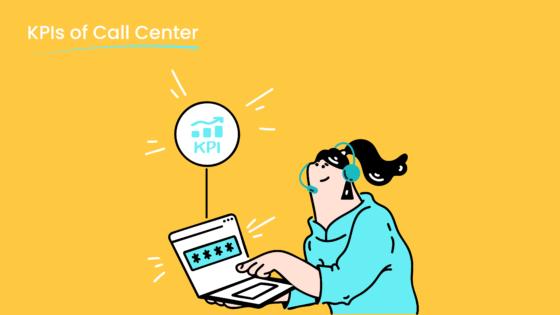
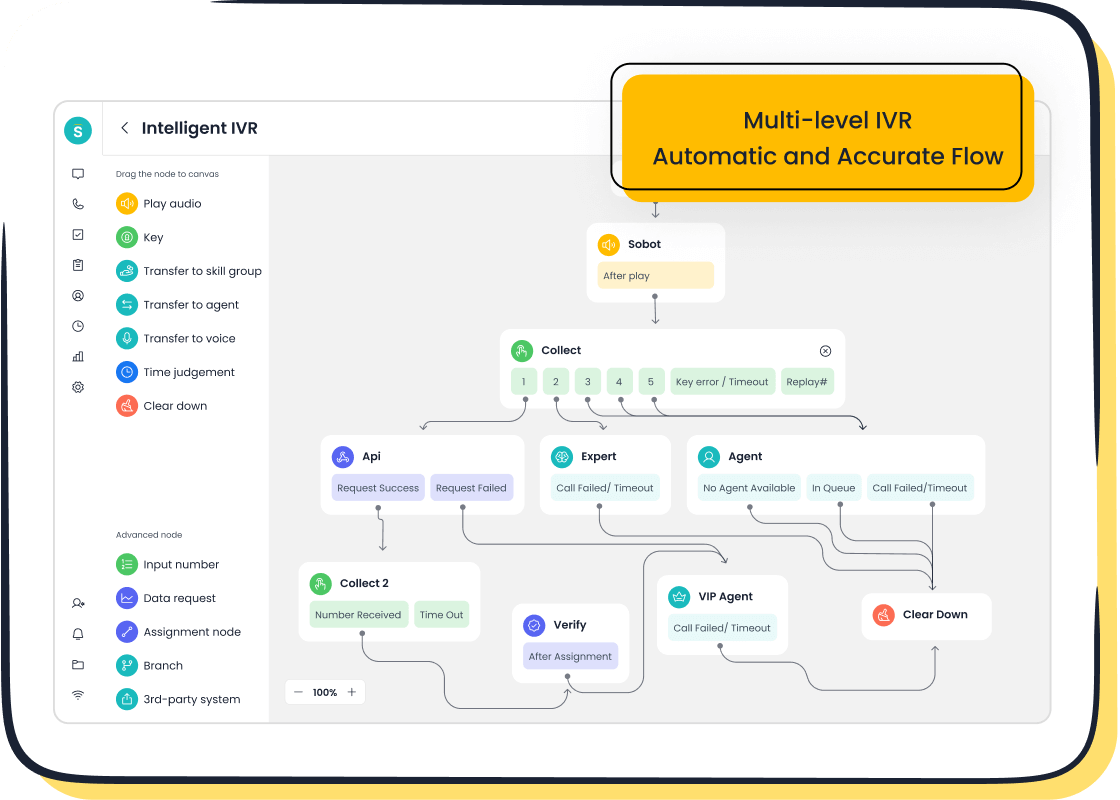
In 2025, tracking KPIs for customer service isn't just important—it’s essential. Poor customer service costs U.S. businesses a staggering $75 billion annually, while improving customer experience can boost revenues by 10-15%. Metrics like Customer Satisfaction Score (CSAT) and First Contact Resolution (FCR) directly impact loyalty and operational costs. Tools like Sobot’s Voice/Call Center simplify tracking KPIs for customer service with real-time monitoring and smart call routing, helping you enhance efficiency and satisfaction. Remember, better KPIs for customer service mean happier customers and stronger business growth.
Understanding Customer Service KPIs
What Are Customer Service KPIs?
Customer service KPIs are measurable values that help you understand how well your customer service team is performing. Think of them as a scorecard for your service operations. These metrics track everything from how quickly your team responds to inquiries to how satisfied customers feel after interacting with your business. For example, First Response Time measures how fast you address customer requests, while Resolution Rate shows how effectively you solve their problems.
Here’s a quick snapshot of some key KPIs:
| KPI | Description |
|---|---|
| First Response Time | Measures the speed at which customer requests are addressed, crucial for customer satisfaction. |
| Customer Request Volume | Indicates the number of requests sent to the service team, helping to understand workload and staffing needs. |
| Resolution Rate | Shows effectiveness in resolving customer issues, based on customer confirmation. |
| Average Handle Time | Measures efficiency by tracking the time spent on customer interactions. |
| Customer Satisfaction Score | Reflects customer satisfaction levels, typically gathered through surveys post-interaction. |
These KPIs give you a clear picture of your team’s strengths and areas for improvement.
Why Are KPIs Essential for Customer Service in 2025?
In 2025, customer expectations are higher than ever. People want fast, efficient, and personalized service. Tracking customer service KPIs ensures you’re meeting these demands. For instance, First Response Time directly impacts customer satisfaction. If you respond quickly, customers feel valued. On the other hand, metrics like Customer Request Volume help you plan staffing better, ensuring no one waits too long for help.
By focusing on these KPIs, you can improve the customer experience and stay ahead of competitors. After all, happy customers are more likely to stick around and recommend your business to others.
How KPIs Drive Customer Satisfaction and Business Growth
Customer service KPIs don’t just measure performance—they drive results. Take the Customer Satisfaction Score (CSAT), for example. It tells you how happy customers are after interacting with your team. Did you know that improving CSAT by just one point can boost your revenue by 2.5%? That’s the power of focusing on the right metrics.
Similarly, Net Promoter Score (NPS) reveals how likely customers are to recommend your business. A high NPS means more loyal customers and free word-of-mouth marketing. And don’t forget First Contact Resolution (FCR). Solving issues on the first try builds trust and reduces operational costs.
By tracking and optimizing these KPIs, you’re not just improving customer service—you’re driving business growth.
Key Customer Satisfaction Metrics
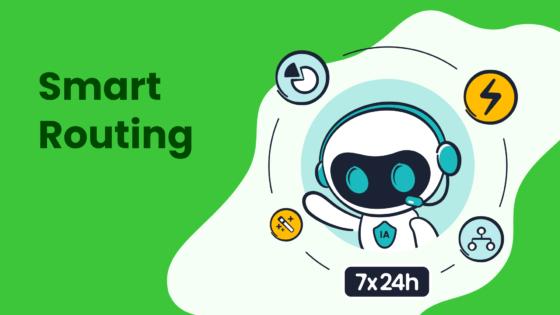
Tracking the right customer satisfaction metrics is like having a roadmap to better service. These metrics help you understand how well you're meeting customer expectations and where you can improve. Let’s dive into three essential ones for 2025.
Customer Satisfaction Score (CSAT)
The Customer Satisfaction Score (CSAT) is one of the most straightforward ways to measure how happy your customers are. After an interaction, you simply ask them to rate their experience, usually on a scale of 1 to 5 or 1 to 10. The higher the score, the happier your customers.
Why does this matter? Because happy customers stick around. They’re more likely to buy from you again and recommend your business to others. For example, Samsung achieved a 97% CSAT by using Sobot’s all-in-one contact center solution. By unifying communication channels and improving agent efficiency, they created a seamless customer experience that left their customers delighted.

Here’s a quick tip: Pair CSAT with tools like Sobot’s Voice/Call Center. Its real-time monitoring and AI-powered insights can help you identify what’s working and what’s not, so you can keep those scores high.
Net Promoter Score (NPS)
The Net Promoter Score (NPS) takes customer satisfaction a step further. Instead of just asking how happy customers are, it asks how likely they are to recommend your business to others. Customers rate this on a scale of 0 to 10, and their responses fall into three categories:
- Promoters (9-10): Loyal fans who’ll spread the word about your business.
- Passives (7-8): Satisfied but not enthusiastic.
- Detractors (0-6): Unhappy customers who might discourage others from choosing you.
Your NPS is calculated by subtracting the percentage of detractors from the percentage of promoters. A high NPS means your customers love you—and that’s priceless.
Why is NPS so powerful? It’s a direct indicator of loyalty and growth. Businesses with high NPS scores often see more referrals and lower churn rates. Plus, it’s a great way to spot areas for improvement. If your detractors are complaining about long wait times, for instance, you can address that by optimizing your team’s performance with tools like Sobot’s smart call routing.
Customer Effort Score (CES)
The Customer Effort Score (CES) measures how easy it is for customers to get their issues resolved. After an interaction, you ask them to rate the effort required on a scale, such as “Very Easy” to “Very Difficult.” The goal? Make things as effortless as possible.
Why is this important? Because customers value convenience. Studies show that reducing customer effort leads to higher satisfaction and loyalty. In fact, 9 out of 10 times, dissatisfaction stems from low First Contact Resolution (FCR). When customers have to call back multiple times, their satisfaction drops by 15%.
Here’s a table to highlight the connection between effort and satisfaction:
| Evidence | Explanation |
|---|---|
| Customer satisfaction drops by 15% with each repeat call | Highlights the negative impact of low FCR on customer satisfaction. |
| FCR is a good indicator of customer satisfaction | Customers who spend less time solving issues are happier. |
| 1% improvement in FCR leads to 1% improvement in customer satisfaction | Direct correlation between FCR and customer satisfaction. |
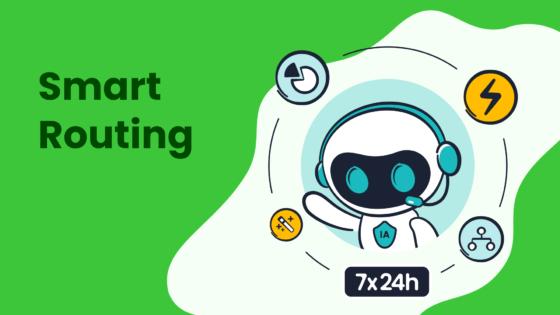
To improve CES, consider using AI-powered tools like Sobot’s Voice/Call Center. Features like intelligent IVR and smart call routing ensure customers get the help they need quickly and efficiently.
By focusing on these three metrics—CSAT, NPS, and CES—you can create a customer experience that not only meets expectations but exceeds them.
First Contact Resolution (FCR)
First Contact Resolution (FCR) is one of the most critical customer service metrics you need to track in 2025. It measures how often your team resolves customer issues during the first interaction, whether through a call, chat, or email. Why does this matter? Because customers hate repeating themselves. If they have to contact you multiple times for the same problem, their frustration grows—and so does the likelihood they'll switch to a competitor.
FCR isn’t just about keeping customers happy. It also saves time and money. When your team resolves issues on the first try, you reduce the need for follow-ups. This boosts efficiency and lowers operational costs. Plus, a high first contact resolution rate builds trust. Customers feel confident that your team can handle their concerns quickly and effectively.
Here’s how you can improve FCR:
- Train your agents: Equip them with the knowledge and tools they need to solve problems on the spot.
- Use smart call routing: Tools like Sobot’s Voice/Call Center ensure customers reach the right agent immediately.
- Leverage AI: AI-powered solutions can handle repetitive queries, freeing up agents to focus on complex issues.
Tip: Monitor your FCR regularly. If you notice a drop, investigate the root cause. Are agents missing critical information? Are customers being transferred too often? Address these issues to keep your FCR high.
Tracking FCR is essential for optimizing your kpis for customer service. It’s not just a number—it’s a reflection of how well your team meets customer needs.
Average Response Time
Average Response Time measures how quickly your team replies to customer inquiries. In 2025, speed is everything. Customers expect fast answers, whether they’re reaching out via phone, email, or social media. If your response time is slow, customers may feel ignored—and that’s a recipe for dissatisfaction.
This metric is especially important for businesses that handle high volumes of inquiries. A quick response shows customers you value their time. It also sets the tone for the entire interaction. If you respond promptly, customers are more likely to stay patient and cooperative.
Improving Average Response Time doesn’t mean sacrificing quality. Here’s how you can strike the right balance:
- Automate simple tasks: Use AI tools like Sobot’s Voice/Call Center to handle routine inquiries.
- Prioritize urgent cases: Smart call routing can help you identify and address high-priority issues first.
- Monitor performance: Real-time analytics let you track response times and identify bottlenecks.
Note: Don’t just aim for speed—focus on accuracy too. A fast but incorrect response can frustrate customers even more.
By optimizing Average Response Time, you’re not just improving customer service kpis. You’re creating a better experience for your customers and setting your business apart from competitors.
Operational Efficiency Metrics for 2025
Average Handle Time (AHT)
Average Handle Time (AHT) is one of the most important call center KPIs you’ll track in 2025. It measures the average time your agents spend handling a customer interaction, including talk time, hold time, and after-call work. While the old benchmark for AHT was around six minutes, the focus has shifted. Now, it’s less about speed and more about resolving issues effectively to boost customer satisfaction.
Why does AHT matter? It directly impacts both your service quality and operational costs. A lower AHT means your team can handle more inquiries, but rushing through calls can hurt the customer experience. The key is finding the right balance. Tools like Sobot’s Voice/Call Center can help by providing real-time monitoring and AI-powered insights, ensuring your agents have the information they need to resolve issues efficiently.
Here’s a quick look at how AHT benchmarks have evolved:
| Metric | Old Benchmark | New Benchmark | Notes |
|---|---|---|---|
| Average Handle Time (AHT) | 6 minutes | Shifted focus | Emphasis on resolving issues efficiently for customer satisfaction. |
Call Abandonment Rate
Call Abandonment Rate measures the percentage of customers who hang up before reaching an agent. High abandonment rates often signal frustration caused by long customer wait times. This metric is crucial for understanding how well your team manages call volumes and ensures a smooth customer experience.
Reducing abandonment rates starts with minimizing wait times. Features like Sobot’s smart call routing and intelligent IVR can help direct customers to the right agent quickly. Additionally, offering self-service options through AI-powered tools can ease the load on your team, ensuring more calls are answered promptly.
Remember, a high call abandonment rate doesn’t just frustrate customers—it can also hurt your brand’s reputation. Keeping this metric low is essential for maintaining service quality and customer loyalty.
Service Level Agreement (SLA) Compliance
Service Level Agreement (SLA) Compliance tracks how well your team meets the agreed-upon service standards, such as response times or resolution times. It’s a critical metric for ensuring your customer service aligns with expectations and delivers consistent results.
For example, if your SLA promises a response within 30 seconds, tools like Sobot’s Voice/Call Center can help you monitor and meet these targets. Real-time analytics and automated workflows ensure your team stays on track, even during peak times. Meeting SLA targets not only improves customer satisfaction but also strengthens trust in your brand.
By focusing on these operational efficiency metrics—AHT, Call Abandonment Rate, and SLA Compliance—you can optimize your customer service operations and deliver a seamless experience in 2025.
Cost Per Contact
Cost Per Contact is a vital metric for understanding the financial efficiency of your customer service operations. It calculates the average cost of handling a single customer interaction, whether through a call, email, or chat. By dividing your total operational expenses by the number of interactions, you get a clear picture of how much each contact costs your business.
Why does this matter? Because it directly impacts your bottom line. Lowering this cost without sacrificing quality can significantly boost profitability. For example, if your team reduces the average handle time while maintaining high service levels, you’ll see a noticeable drop in costs. Tools like Sobot’s Voice/Call Center can help you achieve this balance. Features like intelligent IVR and AI-powered insights streamline operations, ensuring your team works smarter, not harder.
Here’s a quick tip: Keep an eye on related metrics like call abandonment rate and service level compliance. High abandonment rates or missed SLAs can inflate your costs by requiring additional follow-ups. By addressing these issues, you can keep your cost per contact low while improving customer satisfaction.
Pro Tip: Use real-time analytics to identify inefficiencies. Small adjustments, like optimizing agent schedules or automating repetitive tasks, can lead to big savings.
Ticket Backlog
Ticket Backlog measures the number of unresolved customer inquiries at any given time. A growing backlog often signals trouble. It can frustrate customers and overwhelm your team, leading to longer response times and lower satisfaction rates.
Managing your backlog effectively is crucial. Start by prioritizing tickets based on urgency and complexity. Tools like Sobot’s Voice/Call Center can assist with smart routing, ensuring high-priority issues reach the right agents quickly. Additionally, reducing average handle time can help your team clear tickets faster without compromising service quality.
Automation also plays a key role. AI-powered solutions can handle repetitive queries, freeing up agents to focus on more complex problems. This not only reduces the backlog but also improves overall efficiency. Remember, a manageable ticket backlog keeps your team productive and your customers happy.
Note: Regularly review your backlog trends. If you notice a consistent increase, it might be time to reassess your staffing levels or workflow processes.
Agent Performance Metrics That Matter
Tracking agent performance metrics is essential for delivering exceptional customer service in 2025. These metrics help you evaluate how well your team is performing and identify areas for improvement. Let’s explore three key metrics that matter most.
Agent Utilization Rate
Agent Utilization Rate measures the percentage of time your agents spend actively handling customer interactions. It’s a great way to assess how efficiently your team uses its time. A high utilization rate means your agents are productive, but overloading them can lead to burnout. Striking the right balance is key.
For example:
- If your agents are consistently busy, it might indicate understaffing.
- If they’re idle too often, you may need to adjust workloads or schedules.
Here’s a quick table to summarize its benefits:
| Metric | Expected Outcomes | Key Advantages |
|---|---|---|
| Agent Utilization Rate | Balances staffing efficiency with workload | Enhances cost control and prevents burnout |
Using tools like Sobot’s Voice/Call Center can help you monitor this metric in real time. Features like smart call routing ensure your agents stay engaged without being overwhelmed.
First Call Resolution by Agent
First Call Resolution by Agent measures how effectively individual agents resolve customer issues during the first interaction. It’s a critical indicator of both customer satisfaction and operational efficiency. Customers love it when their problems are solved quickly, and your team saves time by avoiding repeat calls.
Here’s why it matters:
- It directly impacts customer satisfaction.
- It reduces operational costs by minimizing follow-ups.
High first contact resolution rates show that your agents are well-trained and equipped to handle inquiries. Tools like Sobot’s AI-powered Voice/Call Center can assist by providing agents with the information they need to resolve issues on the spot.
Agent Satisfaction Score (ASAT)
Happy agents deliver better service. That’s why tracking Agent Satisfaction Score (ASAT) is so important. This metric reflects how satisfied your team feels with their work environment, tools, and support. Low scores can signal issues like poor training or inadequate resources.
Why should you care? Because satisfied agents are more engaged and productive. They’re also less likely to leave, saving you the cost of hiring and training new staff. Regularly gathering feedback and addressing concerns can boost ASAT and improve overall performance.
Tip: Use tools like Sobot’s unified workspace to streamline workflows and reduce agent frustration. A happy team means happier customers.
Adherence to Schedule
Adherence to schedule measures how well your agents stick to their planned work hours. It’s a key metric for ensuring your team is available when customers need them most. If agents frequently miss their schedules, it can lead to longer wait times, higher call abandonment rates, and frustrated customers. You don’t want that, right?
Tracking this metric helps you spot patterns. For example, are agents struggling with late logins or extended breaks? Identifying these trends allows you to address the root causes. Maybe they need better time management tools or more flexible schedules.
Here’s why this matters: When agents adhere to their schedules, your team operates more efficiently. Customers get faster responses, and your service levels improve. Tools like Sobot’s Voice/Call Center make it easy to monitor adherence in real time. You can even set up alerts to flag deviations, so you can act quickly.
Tip: Celebrate agents who consistently meet their schedules. A little recognition can go a long way in boosting morale and encouraging others to follow suit.
Training Completion Rate
Training completion rate tracks how many agents finish their required training programs. It’s one of the most overlooked agent performance metrics, but it’s crucial. Well-trained agents resolve issues faster, improve first call resolution, and deliver better customer experiences.
Think about it: If your agents don’t complete their training, how can they handle complex customer inquiries? This metric ensures your team has the skills they need to succeed. Plus, it highlights gaps in your training programs. If completion rates are low, it might be time to rethink your approach.
To boost this metric, make training engaging and accessible. Use interactive modules, gamification, or even AI-powered tools like Sobot’s Voice/Call Center to simulate real-world scenarios. Regularly update your training materials to keep them relevant.
Pro Tip: Tie training completion to performance reviews or incentives. When agents see the value in completing their training, they’re more likely to prioritize it.
By focusing on adherence to schedule and training completion rate, you’ll improve your kpis and create a more efficient, customer-focused team.
Emerging Customer Service Metrics for 2025
As customer expectations evolve, so do the metrics you need to track. In 2025, emerging customer service metrics like Customer Sentiment Analysis, Omnichannel Engagement Rate, and AI-Driven Resolution Rate are reshaping how businesses measure success. Let’s explore why these metrics matter and how they can transform your customer experience.
Customer Sentiment Analysis
Customer Sentiment Analysis is all about understanding how your customers feel. Instead of just looking at what they say, this metric dives into the tone and emotion behind their words. Whether it’s a social media post, a review, or a conversation with your support team, sentiment analysis helps you gauge customer emotions in real time.
Why is this important? Because emotions drive loyalty. If you know how your customers feel, you can act quickly to address concerns or amplify positive experiences. For example, AI tools can analyze customer interactions and flag negative sentiments, allowing your team to step in before a small issue becomes a big problem.
Here’s a quick look at some key trends shaping sentiment analysis in 2025:
| Source | Key Trends Discussed |
|---|---|
| Navigating 2025 Customer Service Trends for Success | Rise of messaging apps, increased engagement through preferred channels, seamless customer journey. |
| 12 Emerging AI Trends in Customer Service - 2025 AI Statistics | AI tools for analyzing customer interactions, sentiment analysis, and automated survey distribution. |
| 8 Customer Service Trends to Know in 2025 | Investment in AI-driven CX tools, instant multilingual support, omnichannel support, self-service options. |
By leveraging sentiment analysis, you can create a more personalized and proactive customer experience. Tools like Sobot’s Voice/Call Center make this even easier with real-time monitoring and AI-powered insights.
Omnichannel Engagement Rate
Omnichannel Engagement Rate measures how effectively you’re connecting with customers across multiple channels. In today’s world, customers don’t just stick to one platform. They might start a conversation on social media, continue it via email, and finish it over the phone. This metric tracks how seamlessly you manage these interactions.
Why does this matter? Because customers expect consistency. If they have to repeat themselves every time they switch channels, their frustration grows. A high omnichannel engagement rate shows that your team is delivering a smooth, connected experience.
Businesses are already seeing the benefits of omnichannel strategies. By integrating social media, reviews, and customer service interactions, companies can tailor their messaging and build stronger loyalty. Predictive models also help create hyper-targeted strategies, improving retention rates and overall satisfaction.
To boost your omnichannel engagement rate, consider tools like Sobot’s unified workspace. It brings all your communication channels into one place, making it easier for your team to provide consistent support. Plus, features like smart call routing ensure customers always reach the right agent, no matter where they start their journey.
Tip: Track this metric regularly to identify gaps in your customer journey. Are certain channels underperforming? Are customers dropping off at specific touchpoints? Use these insights to refine your strategy.
AI-Driven Resolution Rate
AI-Driven Resolution Rate measures how effectively AI tools resolve customer issues. In 2025, AI isn’t just a nice-to-have—it’s a game-changer. From chatbots to voice assistants, AI is handling more customer interactions than ever before. This metric tracks the percentage of issues resolved by AI without human intervention.
Why is this so impactful? Because it saves time and money. AI can handle repetitive queries, freeing up your agents to focus on complex problems. It also speeds up resolution times, improving first response time and overall satisfaction. For example, AI algorithms can recommend products or solutions based on a customer’s preferences, creating a seamless and personalized experience.
Here’s how AI is transforming customer service:
- It analyzes customer behavior to predict needs and offer tailored solutions.
- It automates surveys and feedback collection, providing real-time insights.
- It enables instant multilingual support, breaking down language barriers.
Tools like Sobot’s AI-powered Voice/Call Center take this to the next level. With features like intelligent IVR and AI-driven insights, you can improve your resolution rate while enhancing the customer experience.
Pro Tip: Combine AI with human expertise for the best results. While AI excels at speed and efficiency, your agents bring empathy and creativity to the table. Together, they create a winning combination.
By focusing on these emerging metrics, you’re not just keeping up with trends—you’re setting your business up for long-term success. These kpis give you the insights you need to deliver exceptional service, build loyalty, and drive growth.
Self-Service Success Rate
Self-service success rate measures how often customers solve their issues without needing help from your team. It’s a game-changer for customer service in 2025. Think about it—customers love convenience. If they can find answers quickly through a knowledge base, chatbot, or FAQ section, they’ll leave happier and more satisfied. Plus, it frees up your agents to focus on more complex problems.
Why does this metric matter? Because it’s a win-win. Customers get faster resolutions, and your team gets fewer repetitive inquiries. A high self-service success rate also reduces operational costs. When customers solve their own problems, you save time and resources. For example, AI-powered tools like Sobot’s Voice/Call Center can guide customers through automated workflows, ensuring they find the right answers without frustration.
Here’s how you can boost this metric:
- Create a robust knowledge base: Make sure your FAQ section covers common questions.
- Use AI chatbots: These can handle repetitive queries and provide instant responses.
- Monitor customer feedback: If customers struggle with self-service options, tweak them to make navigation easier.
Tip: Track the resolution rate of your self-service tools. If customers keep switching to live agents, it’s a sign your self-service system needs improvement.
Self-service success rate isn’t just about convenience. It’s about empowering customers to take control of their experience. When you get this right, you’ll see happier customers and a more efficient team.
Customer Retention Rate
Customer retention rate tells you how well you’re keeping your customers over time. It’s one of the most important customer service kpis you’ll track in 2025. Why? Because retaining customers is cheaper than acquiring new ones. Studies show that increasing retention by just 5% can boost profits by up to 95%.
This metric is simple to calculate. Divide the number of customers you’ve retained by the total number you had at the start of a period, then multiply by 100. A high retention rate means your customers are happy and loyal. A low rate could signal issues like poor service or high customer churn rate.
Here’s why retention matters:
- Loyal customers spend more.
- They’re more likely to recommend your business.
- They reduce your marketing costs.
To improve your customer retention rate, focus on delivering exceptional service. Tools like Sobot’s Voice/Call Center can help you track customer interactions and identify pain points. For example, if customers frequently complain about slow resolution rates, you can address this by optimizing workflows or training your agents.
Pro Tip: Use sentiment analysis to understand how customers feel about your service. Happy customers stick around, but frustrated ones leave. Act on negative feedback quickly to prevent churn.
Retention isn’t just about keeping customers—it’s about building relationships. When you prioritize their needs, they’ll reward you with loyalty and advocacy.
Practical Strategies to Track and Improve KPIs
Setting Realistic and Measurable Goals
Setting clear goals is the foundation of improving your customer service kpis. Without realistic and measurable objectives, it’s like trying to hit a target in the dark. Start by identifying the key metrics that align with your business priorities. For example, if reducing wait times is a priority, focus on metrics like Average Speed to Answer (ASA) and Call Abandonment Rate.
A great way to structure your goals is by using frameworks like OKRs (Objectives and Key Results). For instance, a global tech giant once faced challenges with misaligned goals. By adopting OKRs and implementing KPI dashboards, they achieved a 15% boost in efficiency and improved customer satisfaction. The lesson? Clear communication and regular monitoring make all the difference.
Here’s a quick table to inspire your goal-setting process:
| Case Study | Challenge | Strategy Implemented | Results |
|---|---|---|---|
| Global Tech Giant | Misaligned product development | Adopted OKRs and KPI dashboards | 15% increase in efficiency |
| Financial Services Firm | Aligning digital initiatives | Used Balanced Scorecard | 12% increase in customer retention |
Tip: Break down your goals into smaller, actionable steps. This makes them easier to track and achieve.
Leveraging Real-Time Analytics with Tools Like Sobot
Real-time analytics are game-changers for tracking and improving kpis. They give you instant insights into what’s working and what’s not. Tools like Sobot’s Voice/Call Center make this process seamless by offering features like real-time monitoring and smart dashboards.
Imagine tracking metrics like Average Handle Time (AHT), Service Level Adherence (SLA), and Customer Retention Rate in one place. Here’s a snapshot of key metrics you can monitor:
| KPI | Description |
|---|---|
| Call Volume | Measures the total number of calls received. |
| Average Speed to Answer (ASA) | Indicates the average time taken to answer calls. |
| Abandon Rate | Percentage of calls abandoned before being answered. |
| CSAT and NPS | Customer feedback scores for satisfaction and loyalty. |
| Employee Satisfaction | Evaluates staff morale and engagement levels. |
By using tools like Sobot, you can identify bottlenecks and make data-driven decisions. For example, if your Average Wait Time is climbing, you can adjust staffing or optimize workflows to bring it down.
Pro Tip: Use real-time analytics to spot trends early. This allows you to act quickly and keep your customer service running smoothly.
Empowering Agents Through Training and AI Assistance
Your agents are the backbone of your customer service. Empowering them with the right training and tools can significantly improve your kpis. Start by offering training programs that focus on both technical skills and soft skills like empathy and communication.
Modern analytics tools can enhance training effectiveness. For instance, post-training assessments ensure agents retain knowledge, while real-time feedback helps refine future sessions. Here’s how training impacts agent performance:
- Increased Retention: Agents stay longer when training aligns with their career goals.
- Continuous Improvement: Analytics-driven training adapts to real-time needs.
- Behavioral Changes: Metrics like error reduction show tangible results.
AI assistance also plays a crucial role. Tools like Sobot’s Voice/Call Center provide agents with real-time insights and automated workflows. This reduces their workload and allows them to focus on complex issues. When agents feel supported, they perform better, leading to higher customer satisfaction.
Note: Encourage agents to use reporting dashboards for self-coaching. This fosters a sense of ownership and motivates them to improve.
Using Customer Feedback to Refine Strategies
Customer feedback is like a treasure chest of insights. It tells you what’s working and what needs improvement. Ignoring it means missing out on opportunities to refine your customer service strategies. So, how can you use feedback effectively?
- Collect Feedback Regularly: Use surveys, reviews, and social media to gather customer opinions. Tools like Sobot’s Voice/Call Center make this easy by automating feedback collection after every interaction.
- Analyze the Data: Look for patterns. Are customers frequently mentioning long wait times or unresolved issues? These trends highlight areas where your team can improve.
- Act on Insights: Don’t just collect feedback—use it. If customers complain about slow responses, consider optimizing your workflows or training your agents.
Tip: Share positive feedback with your team. It boosts morale and shows them the impact of their hard work.
Feedback isn’t just about fixing problems. It’s also a way to innovate. For example, if customers suggest new features or services, consider implementing them. Listening to your customers shows you value their input, which builds loyalty and trust.
Regularly Reviewing and Adjusting KPIs
Your customer service kpis aren’t set in stone. They need regular reviews to stay relevant. Why? Because customer expectations and business goals evolve. What worked last year might not work now.
Start by scheduling periodic reviews—monthly or quarterly works best. During these reviews, ask yourself:
- Are your kpis aligned with your current goals?
- Are you meeting your targets?
- Are there new metrics you should track?
For example, if you notice a drop in First Contact Resolution, dig deeper. Are agents missing key information? Are customers being transferred too often? Identifying these issues helps you adjust your strategies.
Pro Tip: Use tools like Sobot’s real-time analytics to monitor your kpis. They provide instant insights, making it easier to spot trends and make data-driven decisions.
Adjusting your kpis isn’t just about fixing problems. It’s about staying ahead. By regularly reviewing and refining your metrics, you ensure your customer service remains top-notch.
Tools and Technologies for Optimizing KPI Tracking
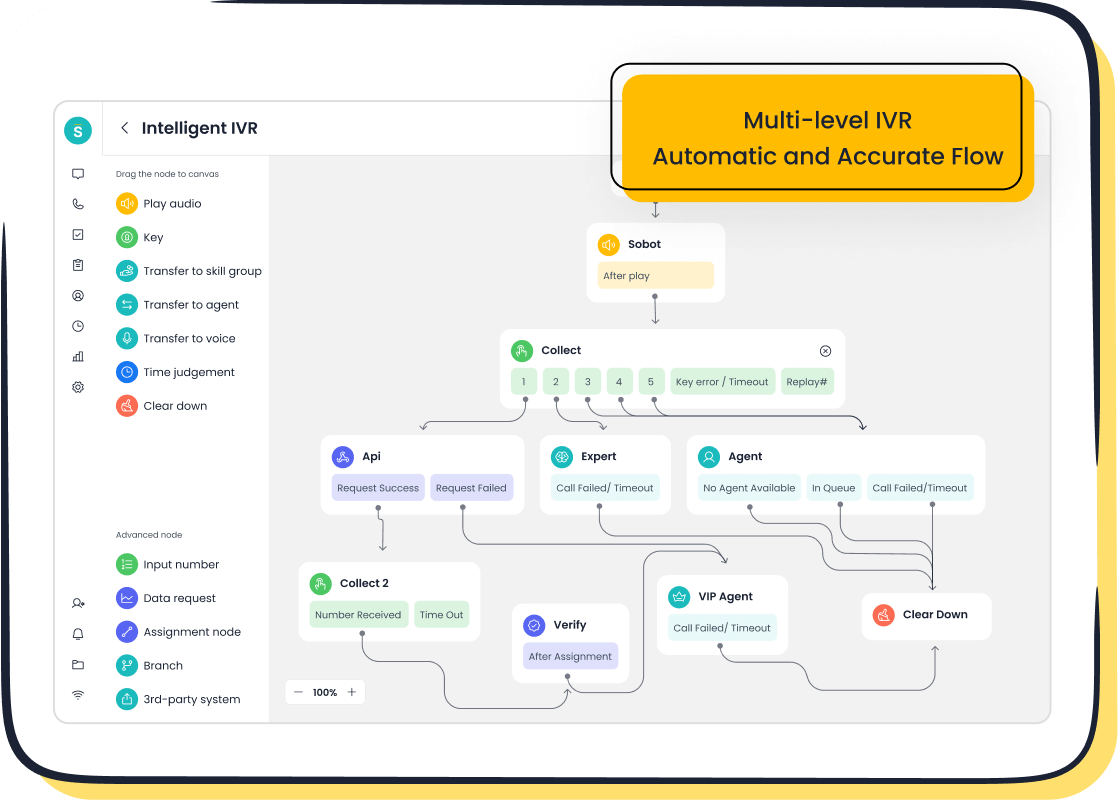
Sobot's Voice/Call Center for Real-Time Monitoring
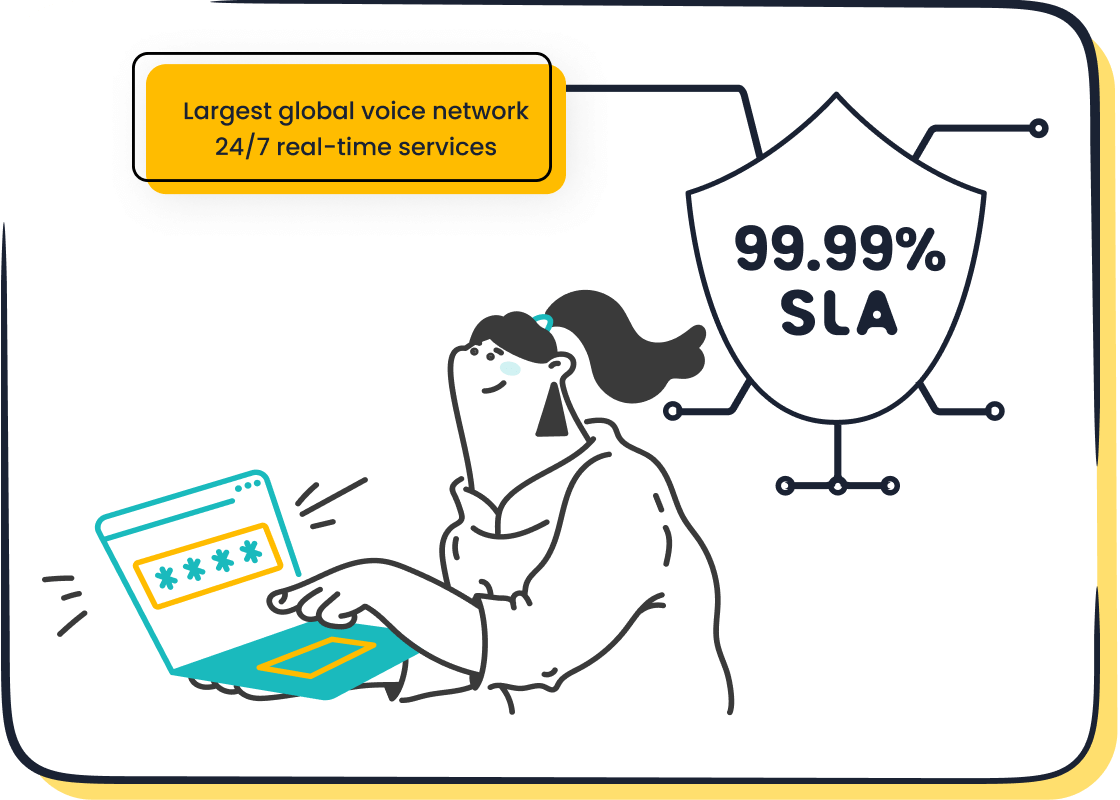
When it comes to tracking customer service KPIs, real-time monitoring is a game-changer. Sobot's Voice/Call Center offers a suite of features designed to make this process seamless. With tools like intelligent IVR, smart call routing, and AI-powered insights, you can monitor your team’s performance as it happens. This means you’ll spot issues early and make adjustments before they escalate.
For example, Sobot’s platform has helped businesses reduce inbound discussion volume by 20% and achieve a 97% customer satisfaction rate. It also boosts problem resolution rates to 85%, ensuring your customers leave happy. Here’s a quick snapshot of the improvements you can expect:
| Metric | Improvement |
|---|---|
| Inbound discussion volume | Reduced by 20% |
| Positive feedback | Increased to 96%+ |
| Correct answers | Over 80% |
| Customer satisfaction (CSAT) | 97% |
| Problem resolution rate | 85% |
| Customer happiness | 99% |
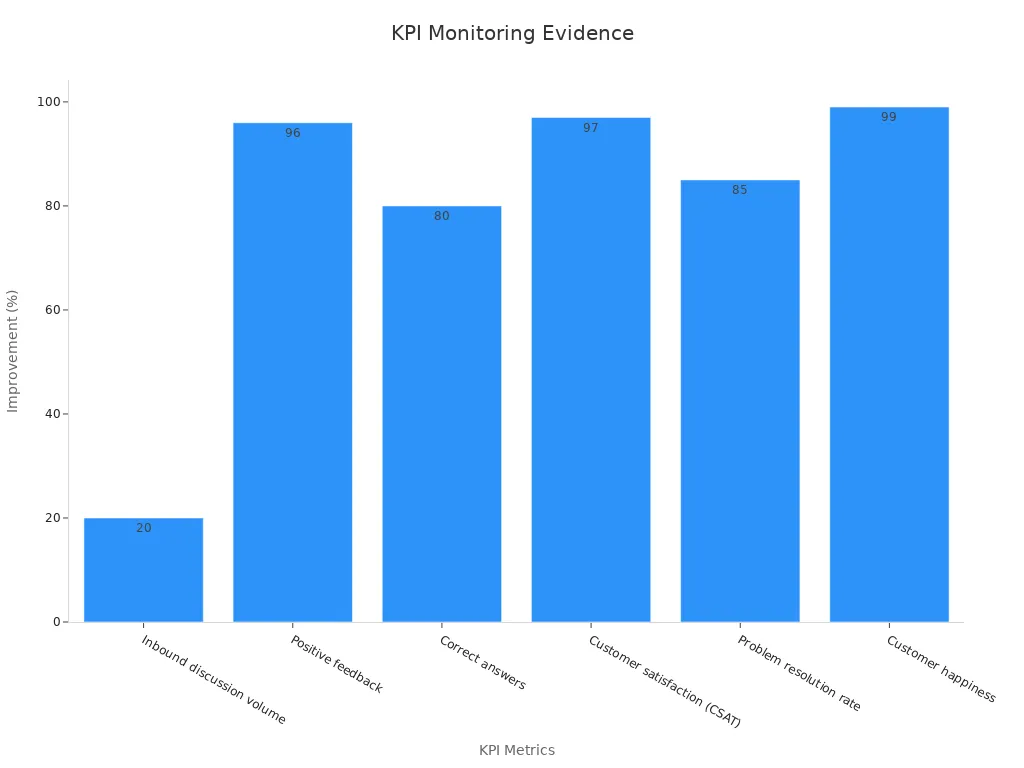
By leveraging Sobot’s real-time analytics, you’ll not only improve your KPIs but also create a smoother experience for your customers.
Customer Relationship Management (CRM) Software
CRM software is another essential tool for optimizing your customer service operations. It centralizes customer data, making it easier for your team to deliver personalized support. But modern CRMs go beyond just storing information—they integrate AI to supercharge your performance.
Did you know that companies using AI in their CRM see a 14% boost in productivity? AI can analyze customer sentiment, helping your agents tailor their responses. It also automates repetitive tasks, so your team can focus on what really matters: solving customer problems. Here’s what the numbers say:
| Statistic | Description |
|---|---|
| 14% increase in productivity | Companies using AI in CRM see significant gains. |
| 51% of sales leaders | Believe AI is essential for CRM strategies. |
| 38% potential sales boost | Personalization driven by AI increases sales. |
With the right CRM, you’ll streamline your workflows, improve customer satisfaction, and stay ahead of the competition.
Help Desk and Ticketing Systems
Help desk and ticketing systems are the backbone of efficient customer service. They organize inquiries, track resolutions, and ensure nothing slips through the cracks. But the real magic happens when you integrate AI into these systems.
AI-powered help desks can handle hundreds of inquiries at once, reducing the need for extra staff during peak times. They also automate repetitive tasks, allowing your team to focus on high-impact issues. For instance, McKinsey found that a leading enterprise reduced call volume by 30% and improved first-call resolution rates by up to 20% after implementing AI.
By using a robust help desk system, you’ll not only manage your workload better but also enhance your team’s efficiency. This means faster resolutions, happier customers, and better KPI performance.
AI and Machine Learning Tools
AI and machine learning tools are transforming how you track and improve customer service kpis. These technologies analyze massive amounts of data in seconds, giving you insights that would take hours—or even days—to uncover manually. They don’t just save time; they also help you make smarter decisions.
For example, AI can predict customer behavior by analyzing past interactions. Imagine knowing what your customers need before they even ask! This allows you to personalize their experience, which boosts satisfaction and loyalty. Machine learning takes it a step further by continuously improving its predictions as it processes more data.
Here’s how these tools can enhance your kpis:
- Real-time analytics: AI-powered dashboards show you live updates on metrics like response time and resolution rates.
- Sentiment analysis: Machine learning detects customer emotions in messages, helping you address issues proactively.
- Automation: AI handles repetitive tasks like answering FAQs, freeing up your team for more complex problems.
Tools like Sobot’s Voice/Call Center integrate AI seamlessly into your operations. Features like intelligent IVR and AI-driven insights ensure your team works efficiently while keeping customers happy.
Tip: Start small. Use AI for one or two tasks, like automating responses or analyzing feedback. Once you see the results, you can expand its role in your customer service strategy.
Customer Feedback Platforms
Customer feedback platforms are your secret weapon for improving customer service. They collect, organize, and analyze feedback from multiple channels, giving you a clear picture of what’s working and what’s not.
Why are they so important? Because feedback is the voice of your customers. It tells you where you’re excelling and where you need to improve. For instance, if customers frequently mention long wait times, you can adjust staffing or optimize workflows to address the issue.
Here’s what to look for in a feedback platform:
- Multi-channel support: Ensure it gathers feedback from emails, chats, calls, and social media.
- Real-time alerts: Get notified immediately when negative feedback comes in, so you can act fast.
- Integration capabilities: Choose a platform that works with your existing tools, like Sobot’s Voice/Call Center.
Using a feedback platform doesn’t just improve your kpis—it strengthens your relationship with customers. When they see you acting on their suggestions, they feel valued and are more likely to stay loyal.
Pro Tip: Regularly share feedback insights with your team. It keeps everyone aligned and motivated to deliver better service.
Tracking customer service KPIs is your roadmap to staying competitive in 2025. These metrics don’t just measure performance—they drive growth, improve customer satisfaction, and refine strategies. For example:
| Benefit | Description |
|---|---|
| Continuous Improvement | Promotes a culture of improvement by measuring performance against competitors. |
| Market Adaptation | Provides insights to adjust strategies to changing market conditions. |
| Competitive Edge | Leads to a sustainable edge, increasing market share and loyalty. |
| Informed Decision-Making | Offers data for smarter decisions, reducing risks and enhancing outcomes. |
| Business Growth | Identifies areas for improvement, refining strategies for effective competition and growth. |
| Customer Satisfaction Scores | High scores attract more customers and boost sales. |
Tools like Sobot's Voice/Call Center simplify KPI tracking with real-time monitoring and AI-powered insights. They help you stay agile and make data-driven decisions. But don’t forget the human touch. While technology enhances efficiency, your agents bring empathy and creativity to customer interactions. Together, they create a winning formula for success.
Robust KPI tracking systems guide you toward strategic goals, foster data-driven decision-making, and ensure agility with evolving business strategies.
FAQ
What are customer service KPIs, and why should you care?
Customer service KPIs are metrics that measure how well your team serves customers. They help you spot areas to improve and track progress. By focusing on KPIs, you can boost satisfaction, reduce costs, and grow your business.
How can Sobot’s Voice/Call Center improve my KPIs?
Sobot’s Voice/Call Center offers tools like real-time monitoring, smart call routing, and AI-powered insights. These features help you reduce wait times, improve resolution rates, and track performance effortlessly. It’s designed to make KPI management simple and effective.
What’s the best way to track customer satisfaction?
Use metrics like CSAT, NPS, and CES. Pair them with tools like Sobot’s Voice/Call Center for real-time feedback and insights. Surveys after interactions also work well. The key is consistency—track satisfaction regularly to spot trends and act quickly.
Can AI really help with customer service?
Absolutely! AI handles repetitive tasks, analyzes customer sentiment, and speeds up resolutions. Tools like Sobot’s AI-powered Voice/Call Center combine automation with human expertise, giving you faster responses and happier customers.
How often should I review my KPIs?
Review your KPIs monthly or quarterly. Regular checks help you stay aligned with goals and adapt to changes. Use tools like Sobot’s real-time analytics to monitor trends and make adjustments as needed.
See Also
Essential Strategies for Effective Call Center Quality Management
Discovering Leading Cloud Contact Centers for the Year 2025
Best Reviews of Cloud Contact Center Services for 2024
Comprehensive Reviews of Leading Contact Center Solutions 2024
